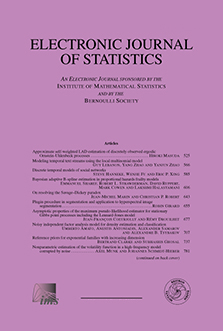Abstract
We introduce models for the analysis of functional data observed at multiple time points. The dynamic behavior of functional data is decomposed into a time-dependent population average, baseline (or static) subject-specific variability, longitudinal (or dynamic) subject-specific variability, subject-visit-specific variability and measurement error. The model can be viewed as the functional analog of the classical longitudinal mixed effects model where random effects are replaced by random processes. Methods have wide applicability and are computationally feasible for moderate and large data sets. Computational feasibility is assured by using principal component bases for the functional processes. The methodology is motivated by and applied to a diffusion tensor imaging (DTI) study designed to analyze differences and changes in brain connectivity in healthy volunteers and multiple sclerosis (MS) patients. An R implementation is provided.
Citation
Sonja Greven. Ciprian Crainiceanu. Brian Caffo. Daniel Reich. "Longitudinal functional principal component analysis." Electron. J. Statist. 4 1022 - 1054, 2010. https://doi.org/10.1214/10-EJS575
Information





